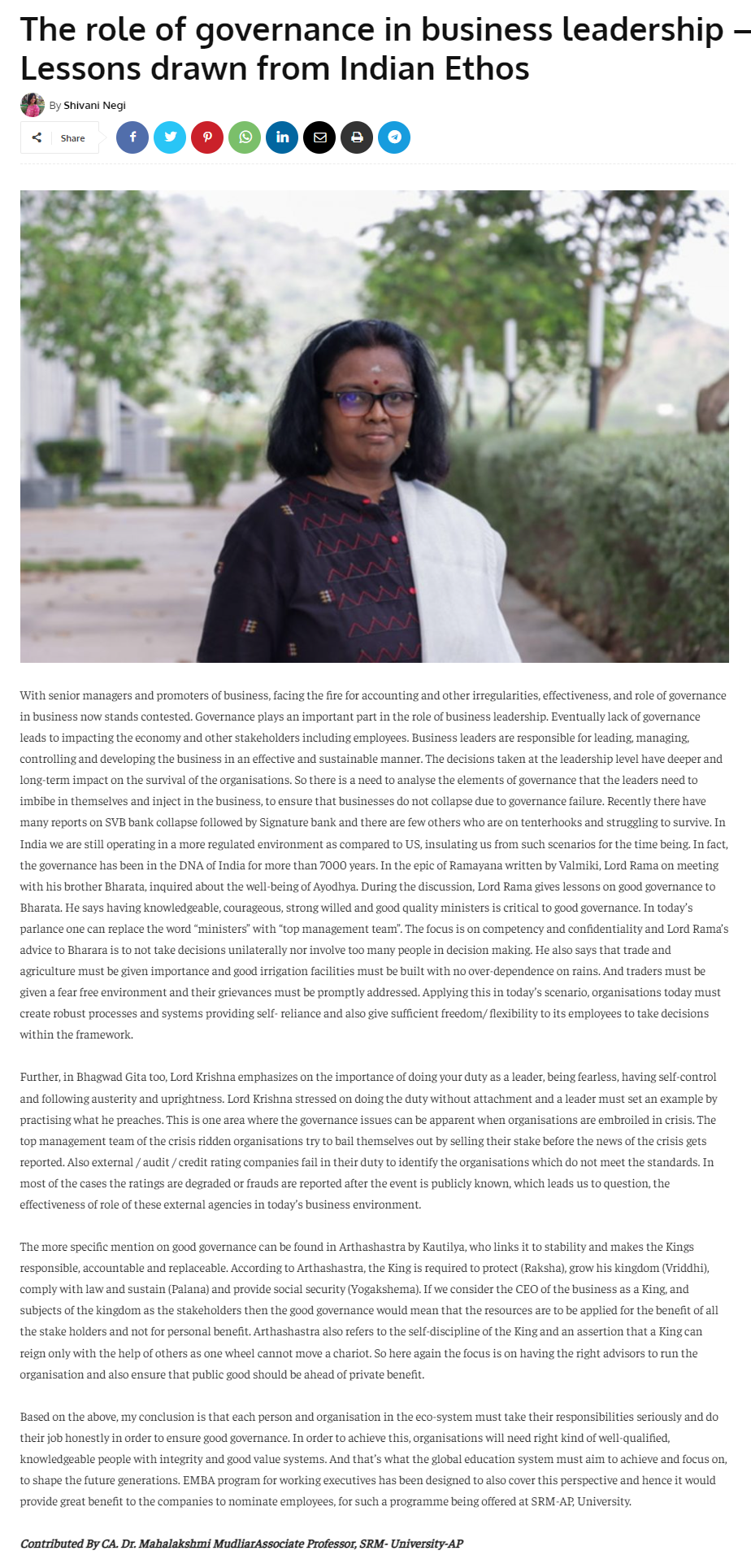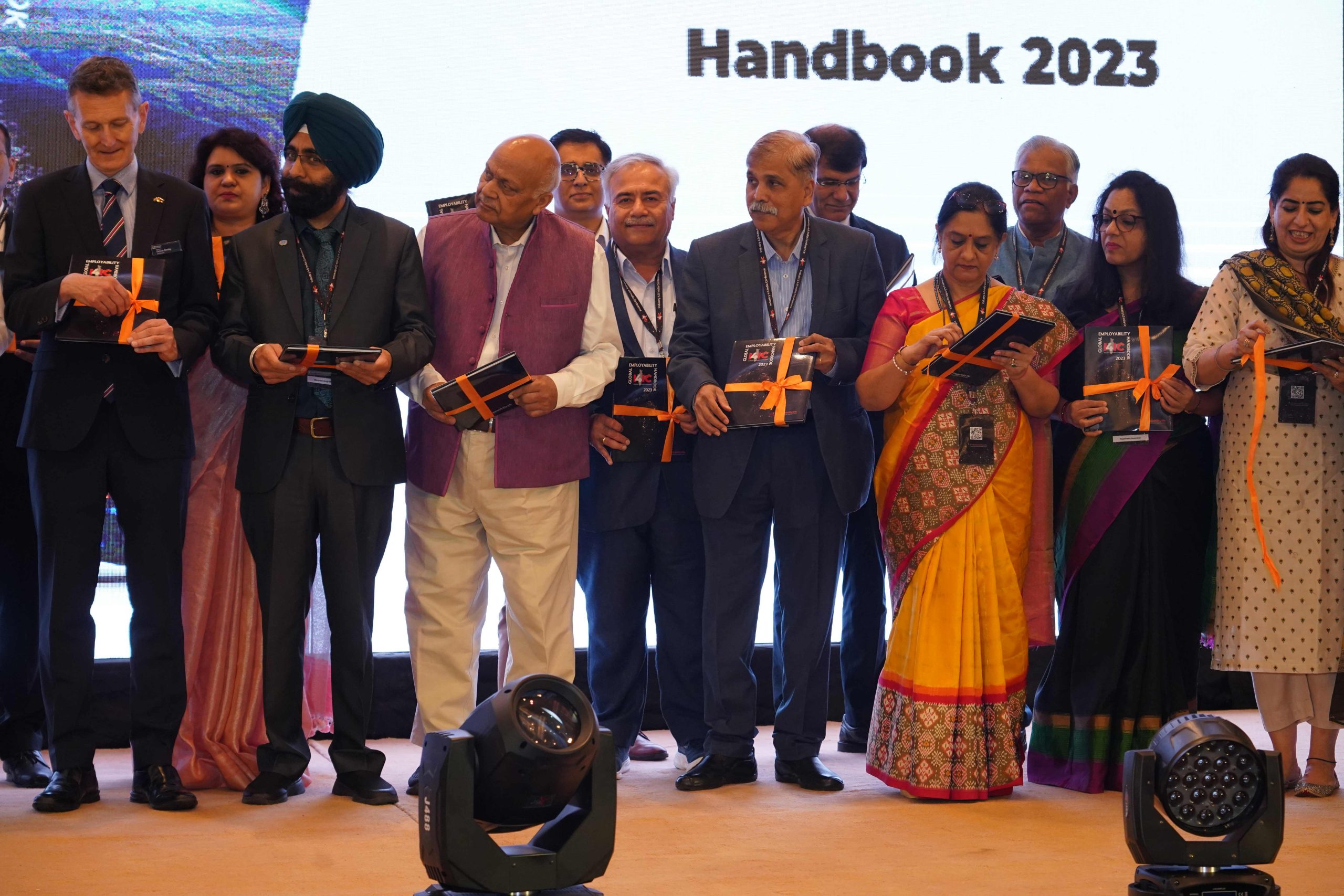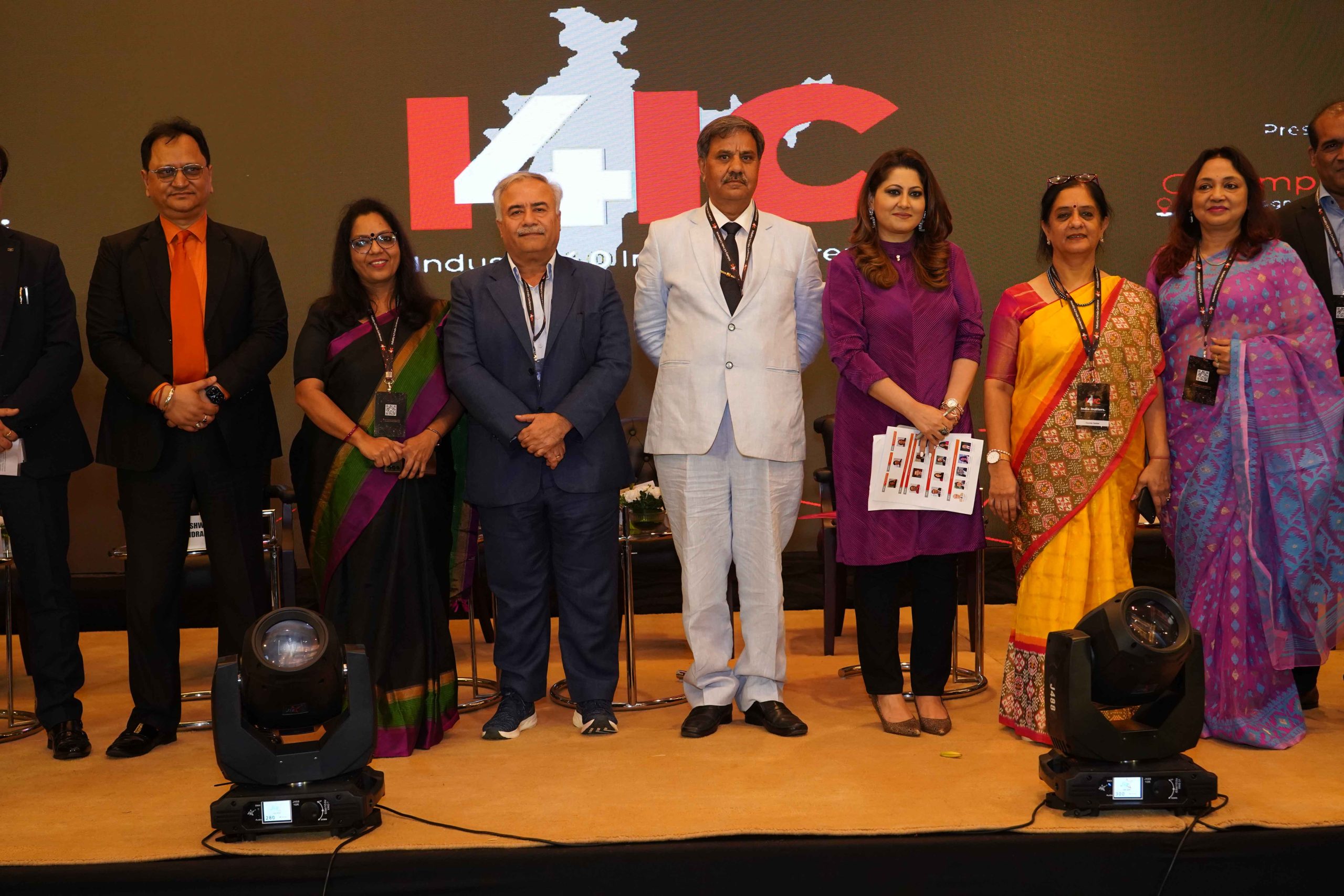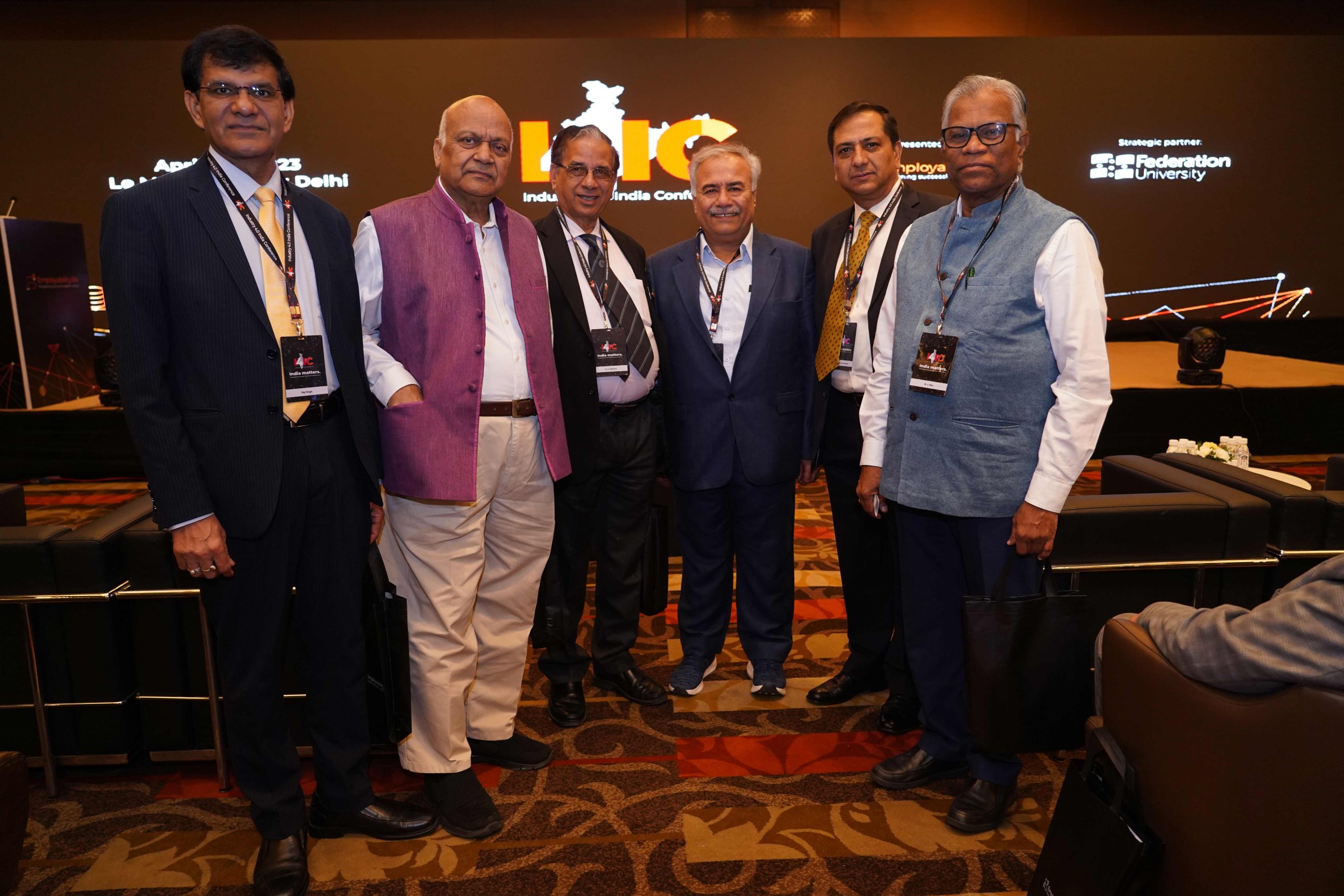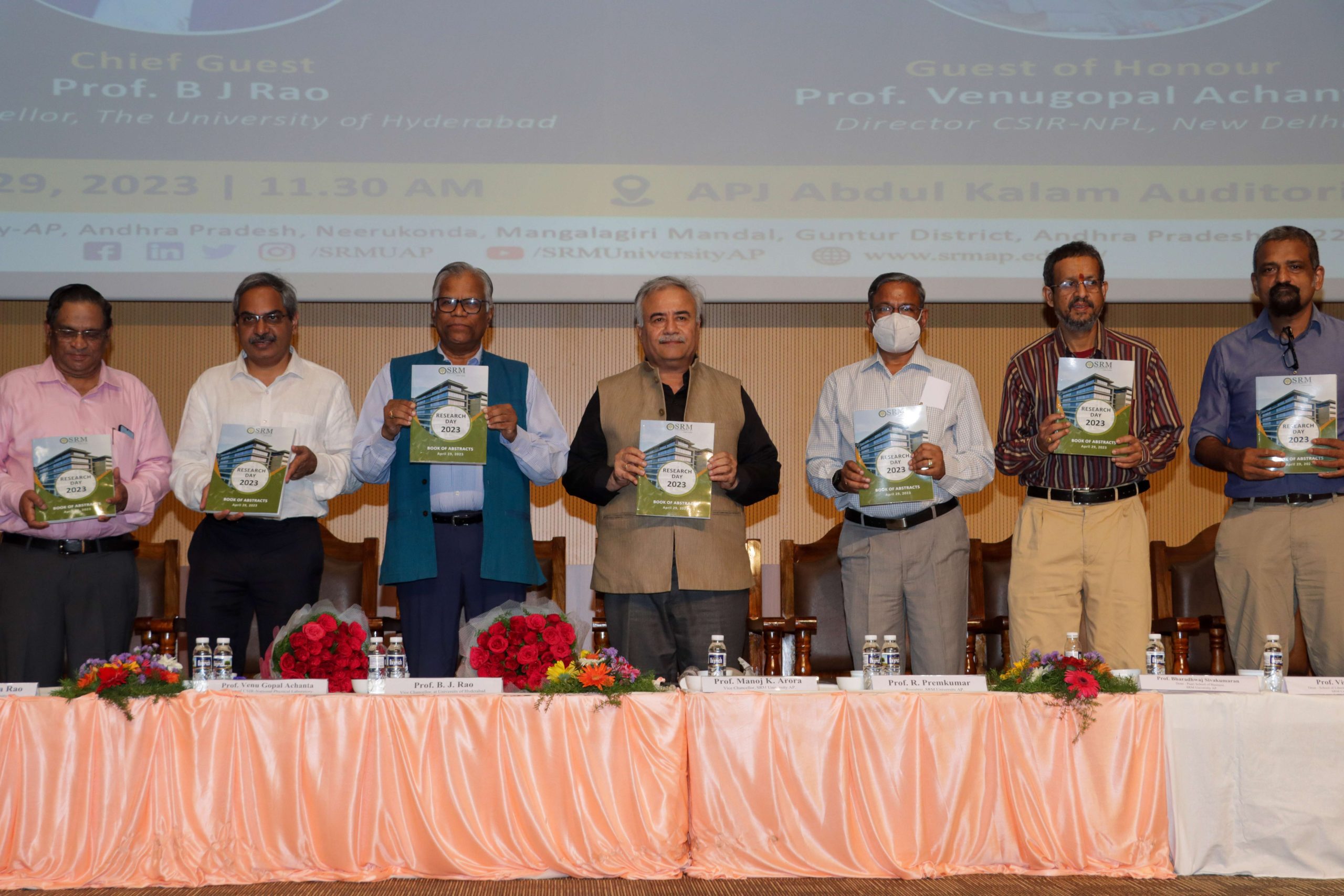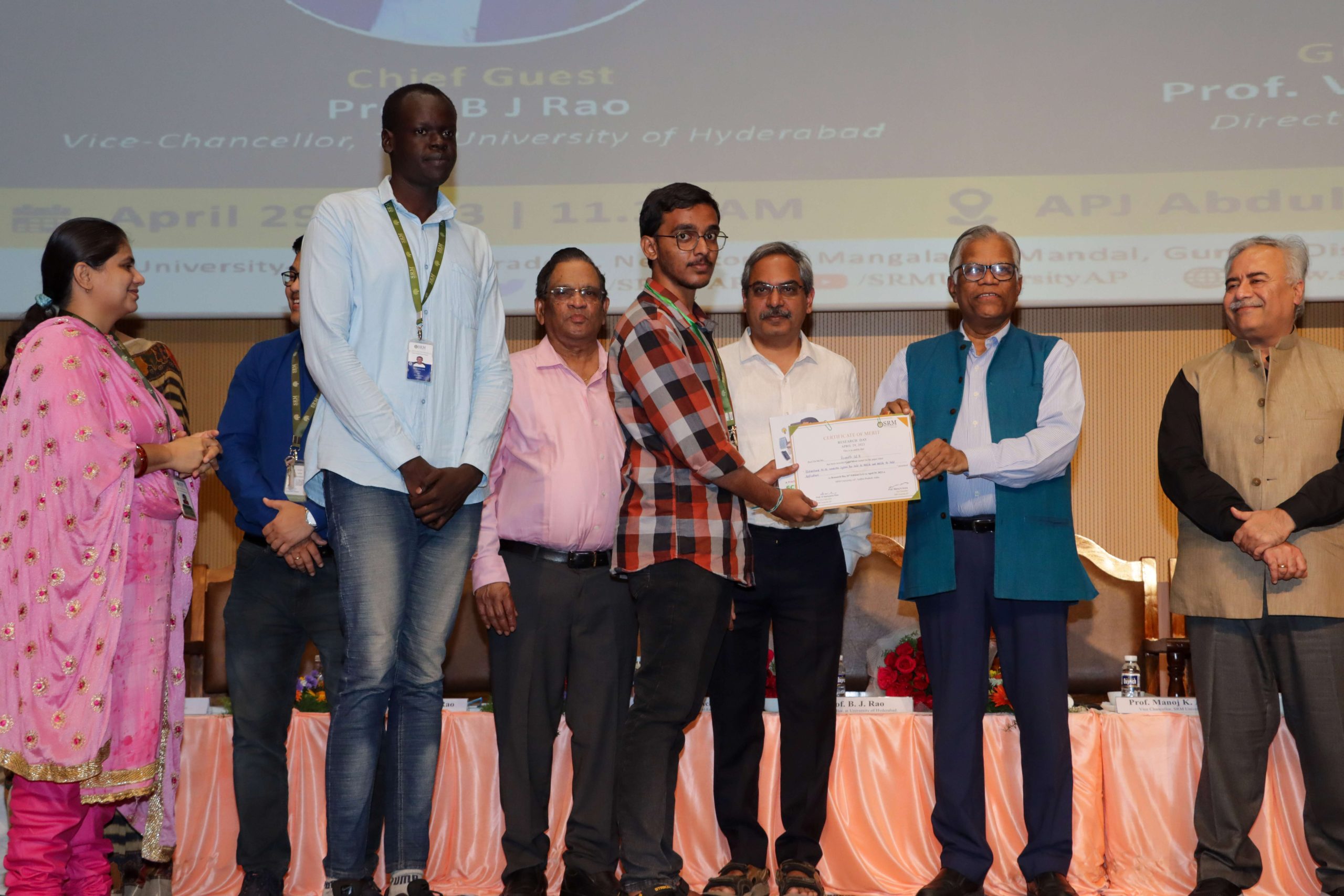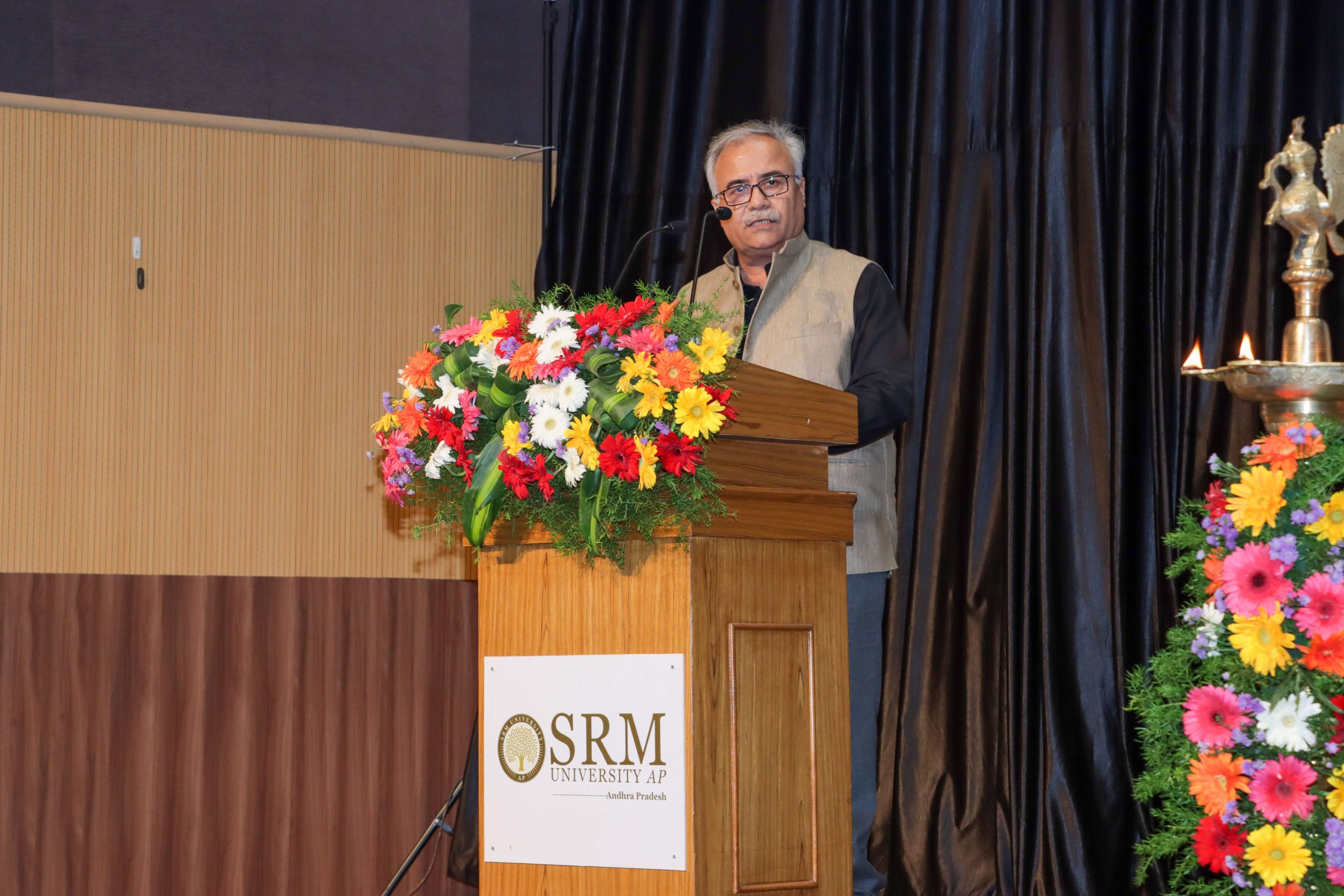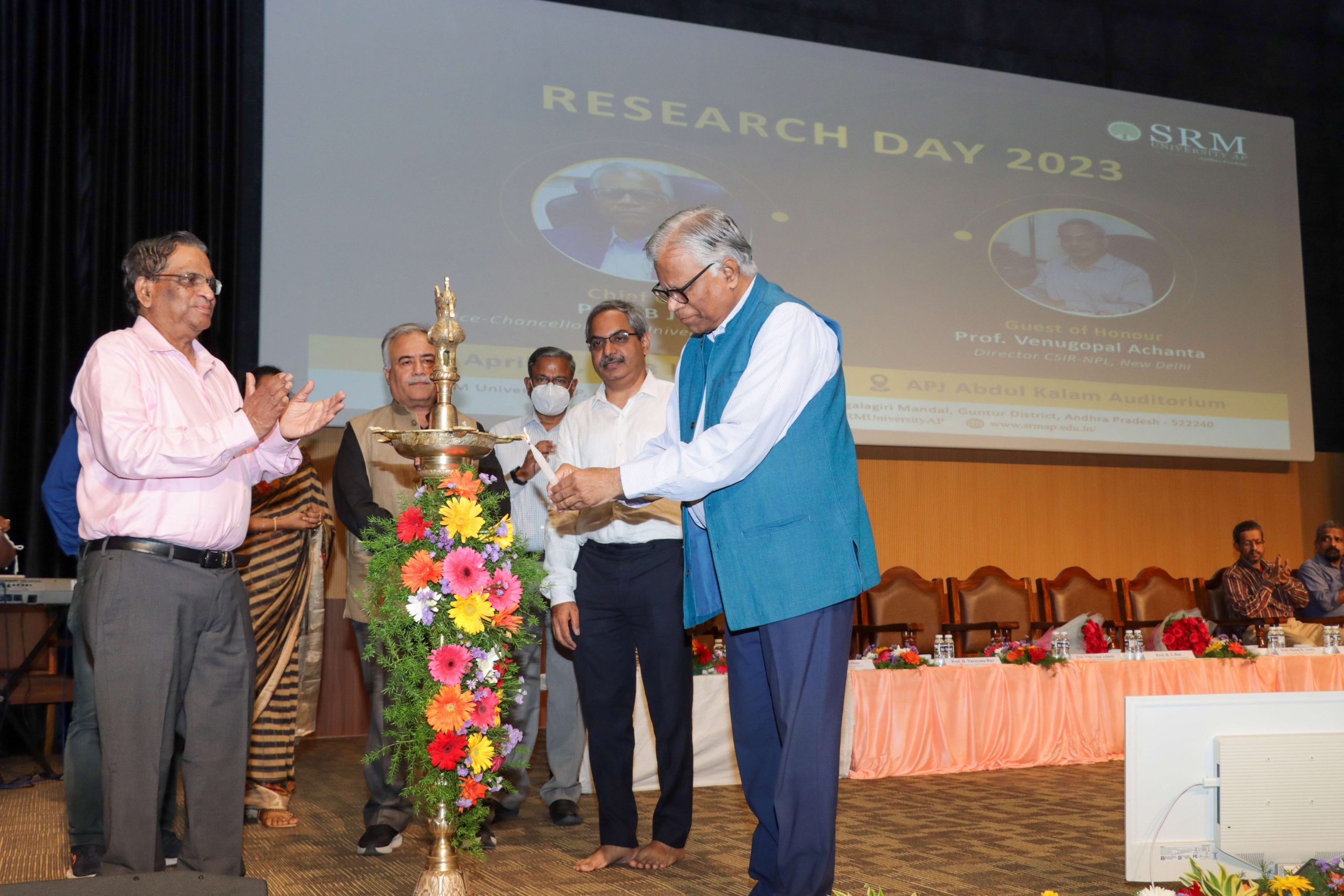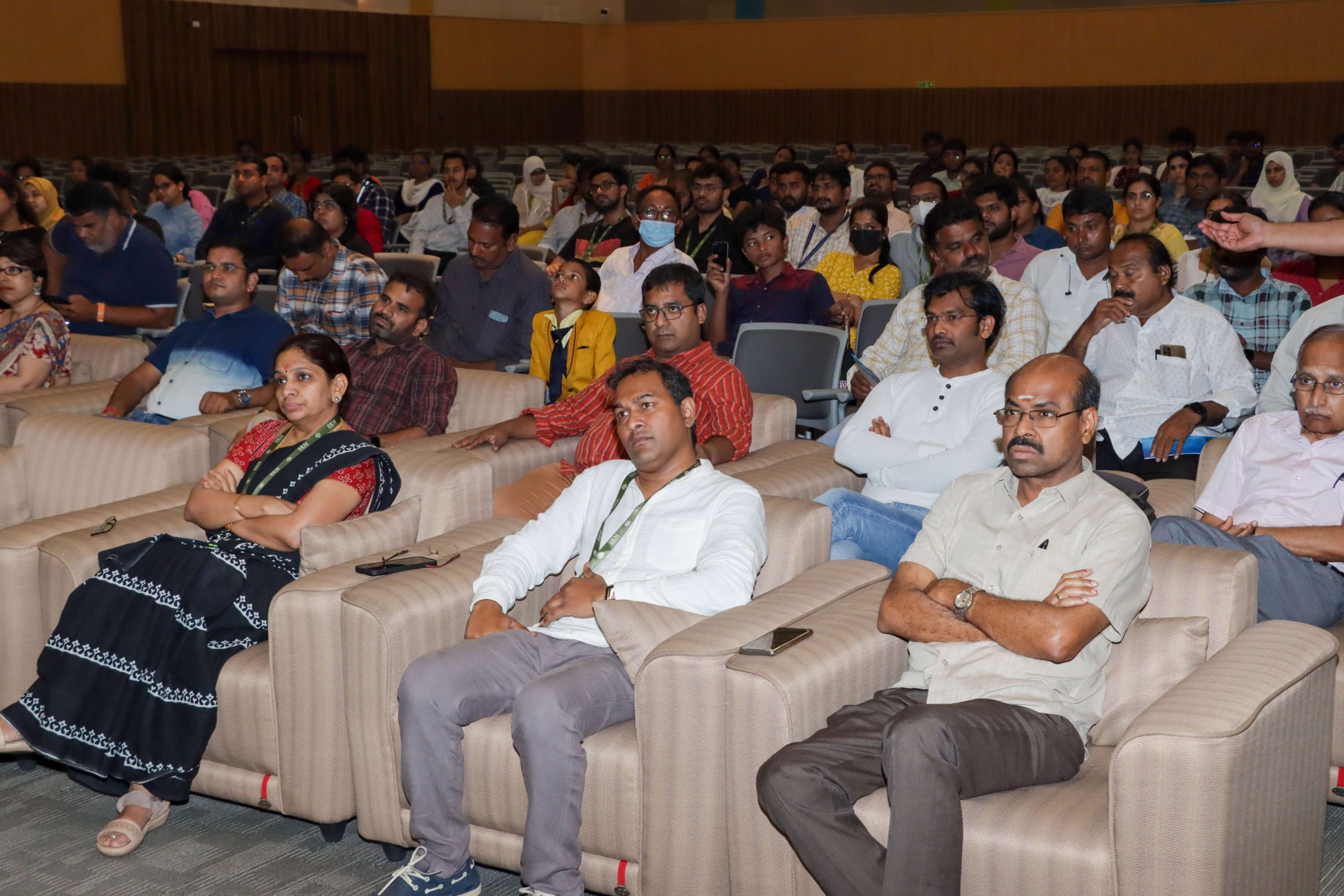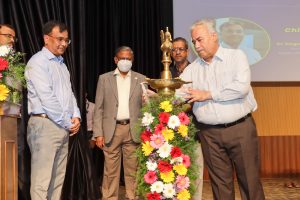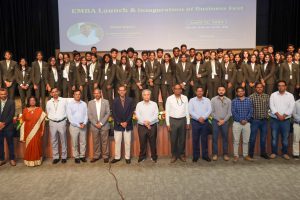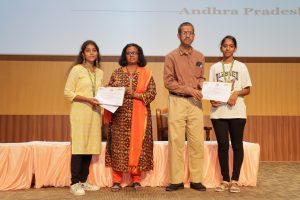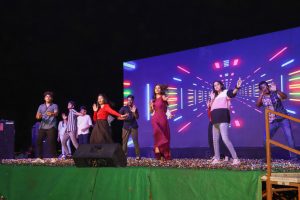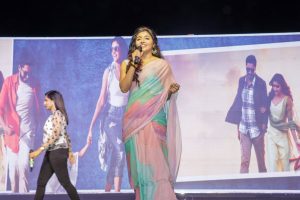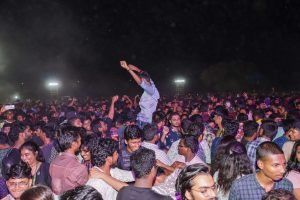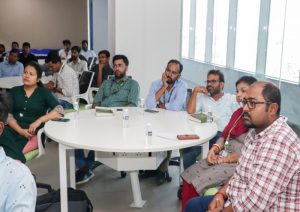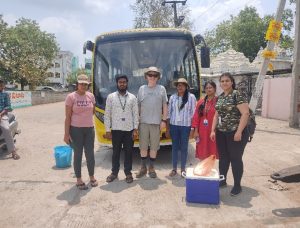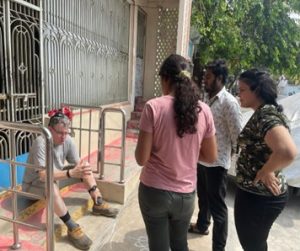All Management Events
- The role of governance in business leadership – Lessons drawn from Indian Ethos May 2, 2023
- Master the Language of the Universe with BSc in Mathematics Course May 2, 2023
BSc in Mathematics (Honours) at SRM University-AP is a four-year undergraduate degree programme which is based on the NEP 2020. The first-semester of the programme is common for all BSc students. In the first semester, there are five common foundations courses, and each one is four credits. And in the second-semester, two more foundation courses (Environmental Science and Communicative English) are common for all BSc students.
First-semester courses require students to choose both a major and minor subject. For example, if a student is pursuing a BSc in Mathematics as their major, they may select Computer Science as their minor. Department counsellors will be available to assist with this decision.
Let’s Delve Deeper Into BSc Mathematics Course Details!
The BSc Mathematics course curriculum is designed in a way that it will provide a rigid foundation in Mathematics, give a flavour of some advanced modern branches of mathematics and develop interdisciplinary skills. SRM University-AP is one of the first Indian universities to introduce a four-year BSc in Mathematics curriculum. The aim of this curriculum is to offer the best undergraduate programmes for Mathematics in India. After successful completion of the BSc programme, the students can directly take admission for the PhD programme in India and abroad.
Due to an extensive range of electives, including four advanced discipline-specific electives and the undergraduate thesis project, students of the BSc Mathematics course at SRM University-AP will be well-prepared for the PhD programme. Moreover, the faculty of the SRM University-AP, carefully supervises each undergraduate thesis.
An effective undergraduate thesis will not only enhance students’ mathematical skills but will also enable them to get admission to top-rated graduate schools in the US and Europe. The curriculum is curated to make students confident of appearing for national and global level maths competitive exams (e.g., GRE, CSIR NET, NBHM, GATE, JAM, TIFR, ISI, CMI etc.)
How is SRM AP’s BSc in Mathematics (Hons) Curriculum Distinct?
The unique curriculum of BSc in Mathematics (Hons) is divided into four years. Until the 5th semester, the curriculum has firm foundational maths courses, including Minor and Foundation courses. From the 6th semester, specialisation starts, and there are three disciplines:
- Pure Mathematics
- Applied Mathematics
- Industrial Mathematics and Data Science
The university has strong contacts with other institutes of eminence both in India and abroad. Apart from a wide range of advanced elective courses, students will be offered minor BSc Mathematics subjects such as Physics, Chemistry, Computer science, Economics, and Statistics.
Let’s Navigate the Stand-out Highlights of SRM University-AP!
Campus-Placement:
SRM University-AP, has an unmatched record in undergraduate students’ placements. The university organises an extensive range of industry and research-specific seminars and workshops. It also offers various training programmes designed to professionalise students in their respective areas.
University Scholarships:
Based on merits, the university offers two types of scholarships-
- Full Scholarship: Complete waiver of tuition, accommodation, and mess fees.
- Partial Scholarship: Tuition fee full/partial waiver.
SRM University-AP also awards scholarships to economically challenged & differently-abled students.
Faculty:
All the faculty members at the university are highly experienced and hold PhD degrees from leading institutions like IITs, IISc, CMI, and renowned foreign universities. Most of the faculty members have international experience in research and teaching.
Infrastructure: The university has a world-class campus designed by Perkins+Will, an American architecture firm that specialises in educational institutions.
International Collaborations: SRM University-AP has collaborations with various eminent institutions, including Illinois Institute of Technology, Northeastern University, University of Wisconsin, Madison, Asia University, Taiwan, Flinders University, Australia, National Tsing Hua University etc. The students also acquire global exposure through the unique opportunity of spending a semester (or an academic visit) abroad. The collaborations of the university foster knowledge creation, skill enhancement, and advancement of an industry association.
Industrial Internship for Data Science and Industrial Mathematics:
SRM University-AP assists its students in getting at least two summer BSc Mathematics internships in the industry. It helps them to acquire industry exposure and to add four credits to the curriculum. In addition, SRM University-AP incorporates a very efficient University-Placement Cell that trains students for industry jobs irrespective of their specialisations.
Altogether, the BSc Mathematics curriculum at SRM University-AP, aims at providing broad and excellent training encompassing the principal ideas in mathematics to prepare students for the industry!
Continue reading → - The 5 ‘I’s of UG and PG Education: Prof. Manoj K Arora at the Industry 4.0 India Conference May 1, 2023
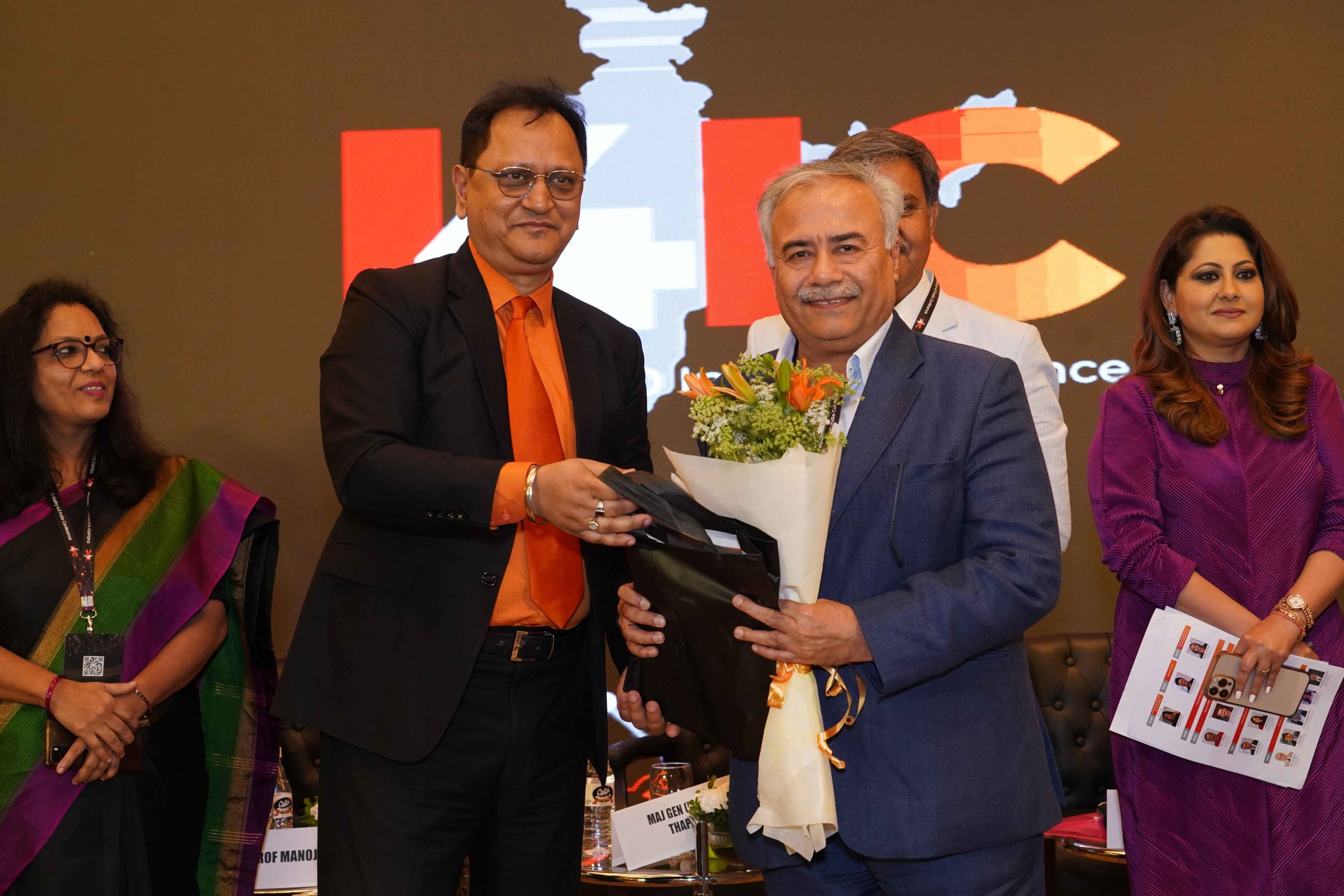 Honourable Vice Chancellor Prof. Manoj K Arora participated in Industry 4.0 India Conference organised by Employability.life in Delhi from April 25 to 26, 2023. At the Vice Chancellors Workshop on April 25, 2023, he emphasised the need to integrate education with skills and certification. He shared his experiences on how SRM University-AP is revamping the curriculum for all UG and PG programmes from 2023 to 24. The 21st-century skills, co-curricular activities, value education, community services, projects, internships, and field studies will be integral to the curricula, delivered through project-based learning and active learning.
Honourable Vice Chancellor Prof. Manoj K Arora participated in Industry 4.0 India Conference organised by Employability.life in Delhi from April 25 to 26, 2023. At the Vice Chancellors Workshop on April 25, 2023, he emphasised the need to integrate education with skills and certification. He shared his experiences on how SRM University-AP is revamping the curriculum for all UG and PG programmes from 2023 to 24. The 21st-century skills, co-curricular activities, value education, community services, projects, internships, and field studies will be integral to the curricula, delivered through project-based learning and active learning.Extending on this concept, during the panel discussion on Transforming Higher Education for India 2030 on April 26, 2023, he spoke about how SRM University-AP focuses on the 5 ‘I’s of UG and PG education. He proceeded to mention the 5 ‘I’s, such as Integrative Curricula where integration of research with teaching, integration of live problems from society and community in courses, integration of industry and international experts with faculty and integration of technology with teaching-learning processes; Interdisciplinarity where research is at the core as many discoveries happen at the border between disciplines, and therefore being borderless will be crucial for meeting the national challenges; Innovation that goes hand in hand with research leading to an entrepreneurial buzz on the campus; International Cooperation that becomes a necessity not only for high-quality research and innovation but for teaching and learning as well; and Inclusivity by involving global partners, the higher education community, industry partners, civil society, government departments and communities in the learning processes thereby promoting rightful intellect distribution.
Continue reading → - Delivered Lecture at the Two – day National Conference on Youth Development May 1, 2023
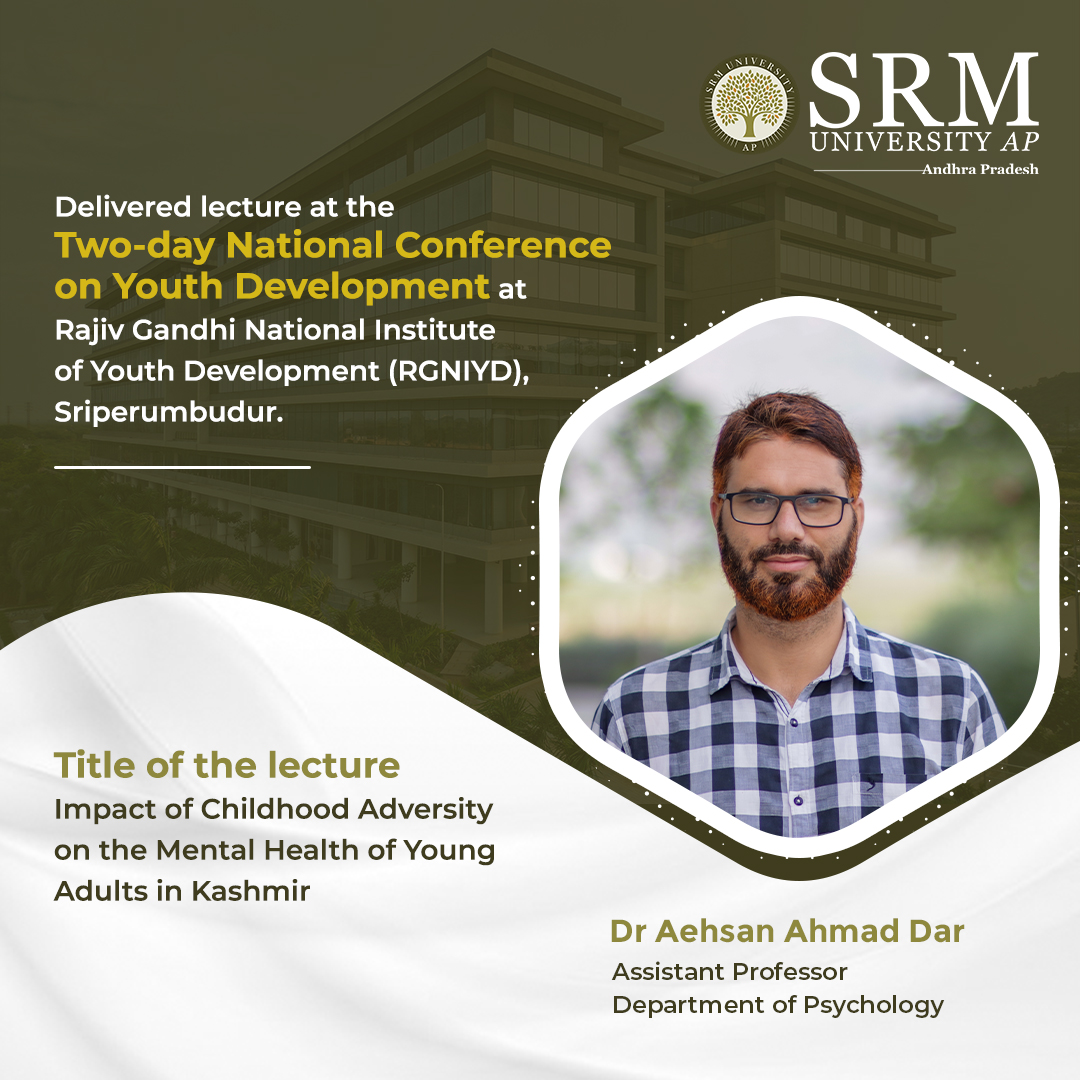 Dr Aehsan Ahmad Dar, Assistant Professor, Department of Psychology, delivered a lecture titled Impact of Childhood Adversity on the Mental Health of Young Adults in Kashmir at the Two – day National Conference on Youth Development held on March 24 and 25, 2023. Youth in the 21st Century: Prospects and Psychosocial Challenges was the theme of the conference, which was organised by the Department of Social Work and Department of Applied Psychology, Rajiv Gandhi National Institute of Youth Development (RGNIYD), Sriperumbudur, Tamil Nadu, in collaboration with ICMR – NIRT, Chennai.
Dr Aehsan Ahmad Dar, Assistant Professor, Department of Psychology, delivered a lecture titled Impact of Childhood Adversity on the Mental Health of Young Adults in Kashmir at the Two – day National Conference on Youth Development held on March 24 and 25, 2023. Youth in the 21st Century: Prospects and Psychosocial Challenges was the theme of the conference, which was organised by the Department of Social Work and Department of Applied Psychology, Rajiv Gandhi National Institute of Youth Development (RGNIYD), Sriperumbudur, Tamil Nadu, in collaboration with ICMR – NIRT, Chennai.Abstract of the Lecture
The study examines the impact of Adverse childhood experiences (ACEs) on mental health among young adults in Kashmir. A cross-sectional research design was followed to study the effect of ACEs on the mental health of Kashmiri youth by employing a multi-stage sampling method. Data were collected from 693 research participants who were studying in different colleges and universities in Kashmir, with the help of the Adverse Childhood Experiences scale and Mental Health Inventory (MHI-18). Findings revealed that various adversities during childhood, including psychological abuse, physical abuse, contact sexual abuse, household substance abuse, violent household treatment of mothers and fathers, household mental illness, and household criminal behaviour, had a significant impact on the mental health of Kashmiri youth in terms of increased anxiety, depression and loss of behavioural control and decreased positive affect.
Practical Implementation of the Findings
ACEs are traumatic events that individuals under 18 have experienced. Various individual, family, and community factors can affect a child’s likelihood of experiencing ACEs, and it causes long-term risks for mental health with the potential to carry over beyond the present generation. ACEs are linked to chronic health problems, mental illness, and adult risk-taking behaviours. There is a “dose-response relationship” between ACEs and health outcomes. Therefore, findings suggest advocating early targeted interventions to reduce ACEs and their impact on young people’s mental health in Kashmir. There is a need to design efficient measures, to enhance ACE resilience programs and ‘trauma-informed’ approaches to tackle the longer-term impact of ACEs on health and wellbeing.
Continue reading → - Explore the Exciting World of Physics and Enrich Your Career with a BSc in Physics May 1, 2023
The BSc in Physics programme offered by SRM University-AP equips students with a sound understanding of concepts and prepares them with a problem-solving approach. The course provides practical training for students that allows them to learn how to model and design solutions to the complexities of the field. The students with a Major in Physics at SRM University-AP can choose two of the following minors:
- Computer Science
- Mathematics
- Chemistry
Moreover, the programme’s interdisciplinary nature allows students to opt for Foundation Courses and Minors in the School of Engineering and Applied Sciences.
Let’s Discover the unsurpassed BSc curriculum at SRM University-AP.
- The BSc programme offered at SRM University-AP puts forward a flexible course curriculum in line with NEP (National Education Policy 2020). The course curriculum allows the students to have the flexibility to choose open electives (OEs), RDIP (research, design, and industry practice), and skill enhancement courses (SEC) in addition to the subject-specific foundation courses, core courses, & core electives. Hence, the BSc curriculum provides broad flexibility for students to enrich and opt for programmes based on their interests, future goals, and natural curiosity.
- Students can choose any two open elective courses offered by any other departments within the university outside the parent department.
- The one-year research, design, and industry practice (RDIP) course enhance the research practice and provides exposure to modern research topics. At the end of the year, the student must submit a thesis/dissertation and presentations. They can also choose a semester internship at national/international universities/research and development centres.
- As per the UGC and NEP 2020 guidelines, the university has now embedded the skill enhancement courses (SEC) in the BSc curriculum, where students will obtain knowledge regarding placement and entrepreneurship.
- The Directorate of International Relations & Higher Studies at SRM University-AP assists students for study abroad programmes with funding and fellowship information.
Why Should You Choose SRM University-AP?
SRM University-AP is one of the leading universities that offer world-class Bachelor of Science (BSc) programmes. The Science programmes at SRM University-AP are curated with a problem-solving approach and endeavour to make the university’s research results relevant and synchronous with society.
Moreover, the following are some notable reasons to choose the BSc programme at SRM University-AP:
Programme Recognition
- The BSc programme at SRM University-AP is UGC recognised in line with the National Education Policy (NEP) 2020.
- Following the NEP guidelines, the university has introduced a three-year BSc Honours + (optional) one-year Research Programme (BSc by Research).
The Reputation of the Programme and the University
- The reputation of a programme depends on the students’ successes and achievements. The University’s BSc in Physics programme is designed to assist students in achieving their career goals and making a lasting impact in the field.
- The programme graduates have a track record of success, with various graduates pursuing advanced degrees. The university alumni have received numerous awards and recognition for their research, published papers in top-tier journals, and made significant contributions to the field.
- Mr Bennet Benny, pursuing BSc in Physics with Research programme, has earned a prestigious Erasmus Mundus Scholarship worth 33,600 EURO and a full tuition waiver for the QuanTEEM Master programme in four European universities. He has also published a research article on MoS2/C heterostructure for supercapacitor application in the Journal of Energy Storage (IF: 6.583).
- Sreelekha Bhuvaneswari, BSc in Physics with Research, received recognition during her programme and completed a research internship at NUS, Singapore. She also published a patent on fibre material with moisture retention and thermal tolerance.
Eminent Faculty:
- SRM University-AP incorporates highly qualified faculty with national/international doctoral degrees and a few years of international postdoctoral experience.
- The faculty at the university has performed and published high-standard research and have been trained under highly accomplished professors in respective fields.
- Modern teaching methods, including MOOC courses, active learning, flip classrooms, and project-based and practical-based learning, have been implemented in the teaching process.
Enormous Scope for Physics & Higher Studies
- The Department encompasses robust national and international collaboration and faculty connections to benefit students.
- The University has a supportive learning atmosphere and easy access to faculty for career advice and academic support.
- A variety of minor/elective options and research opportunities are available at the university to aid in building a career in innovative research areas.
- The programme curriculum is designed to prepare students for global exams through problem-based learning.
- The University also offers internships for physics students and further job opportunities at public sector organisations such as BHEL, ISRO, DRDO, BARC, CSIR Labs and various private sector companies in industries including semiconductors, telecommunications, and batteries.
Flexibility for Internships or Student Abroad Programmes
The BSc Physics syllabus at SRM University-AP allows students to personalise their education as per their interests and career aspirations. They can select from a range of elective courses in multiple subject areas.
- The programme offers internships that align with the student’s area of interest, and any classes combined during the internship period will be adjusted later with extra courses.
- If students are selected for the Student Abroad Programme (SAP), they can continue their studies abroad and ongoing courses at SRM University-AP. The university accommodates them through special crash courses.
Location
SRM University-AP is located at Neerukonda, Mangalagiri Mandal, Guntur District of Andhra Pradesh, between Vijayawada and Guntur. It is well connected via railways, bus, and airport.
Extra-curricular Activities
The University incorporates clubs that organise numerous activities like space-related workshops, webinars/seminars, and competitions like quizzes, debates, digital art, and write-ups.
Besides these, students are encouraged to participate in various activities organised by different clubs under Art and Culture (Photography Club, Music Club, Realistic Dance Club, Creative Arts Club, The Arts Culture & Technology Society, Anime Society), Entertainment (E-sports Club, Movie Club, Cubing Club). For more information about these clubs at SRM University-AP, visit the link: https://srmap.edu.in/clubs-societies/.
Exploration and Development Of Space Club:
physics-SEDS-club at SRM-AP is a branch of the Exploration and Development of Space (SEDS) international student organization (non-profit). The purpose SEDS organization is to drive space advocacy of space exploration and development through educational, scientific, and engineering projects. SEDS-club at SRM-AP aims to Enable multi-/inter-disciplinary collaboration and Generate awareness about disciplines relevant to the space industry (For example, Astrochemistry, Astrobiology, Astrobiology, Astroecology, and Astro-robotics.) by supporting unique ideas, original endeavors, and collaborative efforts between the club members. More details about the SEDS-club at SRM-AP can be found at https://srmap.edu.in/seas/physics-seds-club/
Merit-Based Fee Structure
The cost of tuition and other fees and the availability of financial aid and scholarships are also offered to SRM University-AP students.
Moreover, the university incorporates sophisticated classrooms well-equipped with Mechanics, Electricity and Magnetism, Optics, and Solid-state Physics Teaching Labs; Advanced Research Labs; World Class Library with an excellent collection of books from science, engineering and management and has access to many national and international journals.
In addition, the BSc programmes offered by SRM University-AP cut across the traditional boundaries of domains and expand across the innovation lifecycle, from research to knowledge development and its application to navigate the pursuit of more equitable and sustainable development.
Continue reading →Category Annual Tuition Fee (INR) Eligibility JEE Percentile Scholarship Exam (score in %age) 12th average- CBSE/ICSE (score in %age) 12th average- Other boards (score in %age) Category A Fees ₹ 0 95+ 95+ 95+ 98+ Category B Fees ₹ 42,500 90-94.99 90-94.99 90-94.99 95-97.99 Category C Fees ₹ 80, 000 70-89.99 70-89.99 70-89.99 75-94.99 Category D Fees ₹ 1,55,000 <70 <70 60-69.99 60-74.99 ^There are limited seats available for each category. Basic eligibility criteria needs to be adhered for all categories
Refundable Academic Caution Deposit Fee Rs 5000/-
- Research Day 2023: Anchoring an Innovative Research Culture May 1, 2023
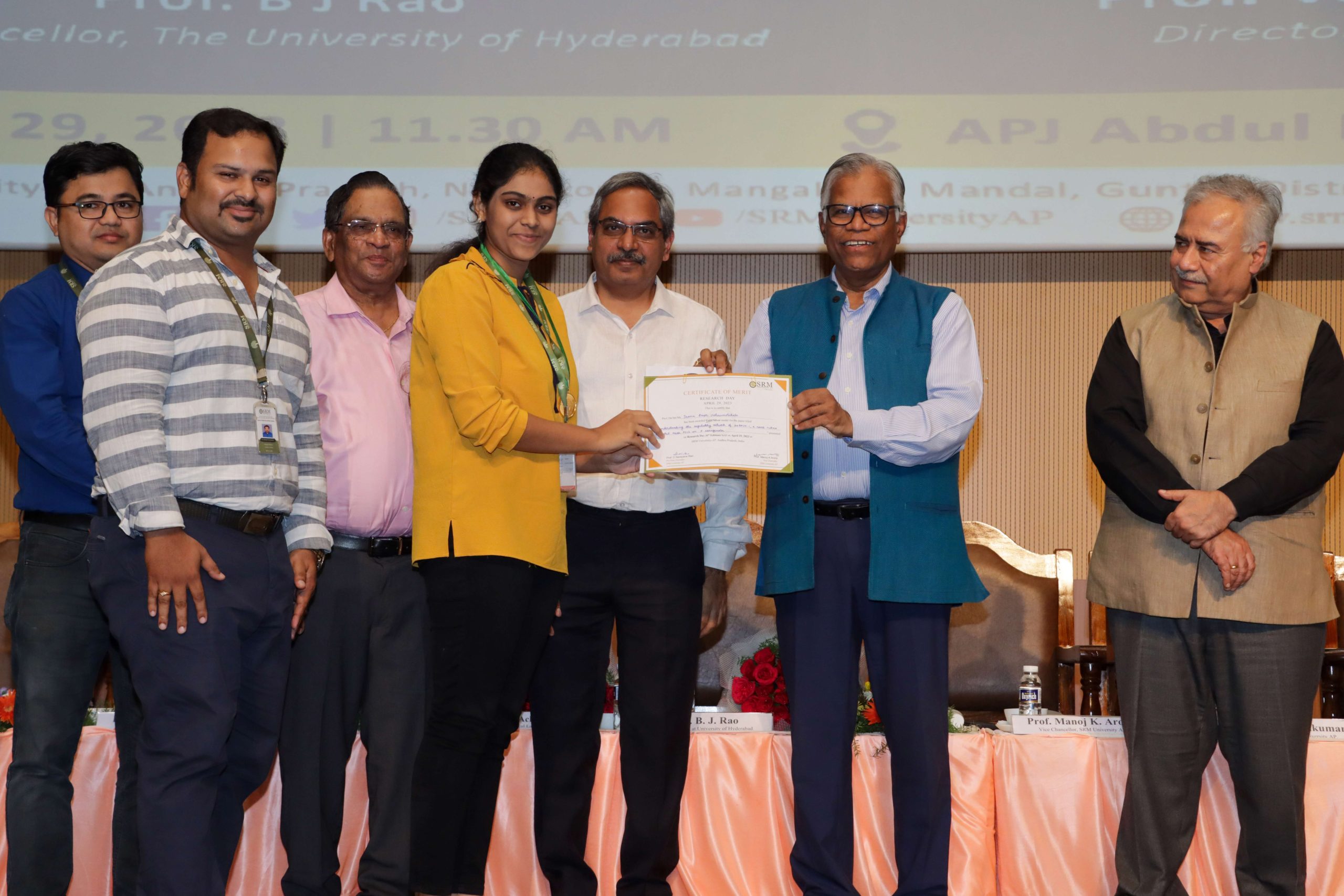 SRM University-AP observed the 6th edition of Research Day on Saturday, April 29, 2023. Research Day aims to foster the exchange of information across disciplines, encourages extensive research projects, and appreciates innovative efforts in research. Prof. B J Rao, Vice-Chancellor, University of Hyderabad, was the Chief Guest and Prof. Venugopal Achanta, Director, CSIR-National Physical Laboratory, Delhi, was the Guest of honour of the illustrious event held on the campus.
SRM University-AP observed the 6th edition of Research Day on Saturday, April 29, 2023. Research Day aims to foster the exchange of information across disciplines, encourages extensive research projects, and appreciates innovative efforts in research. Prof. B J Rao, Vice-Chancellor, University of Hyderabad, was the Chief Guest and Prof. Venugopal Achanta, Director, CSIR-National Physical Laboratory, Delhi, was the Guest of honour of the illustrious event held on the campus.‘‘There are multiple ways to look at the truth. It is the journey of truth that gives you interest in insights, and it is in that context that Research Day is significant. You are not just a human being when you do research; you become a thinker. When you become a thinker, you discover new things and find the actual purpose of your existence. That is the level of culture we need to generate in our educational ecosystem,’’ stated Prof. B J Rao, Chief Guest of the event. He proceeded to explain why education must be an open process of learning and how it happens only by diffusion. ‘‘Scientific ethics is a big challenge in the country. Whatever I do, it is always looked under the microscope. It will take a longer time. It doesn’t matter. Are you not sure? Do one more experiment,’’ said the Guest of honour Prof. Venugopal Achanta.
The 6th edition of Research Day, for the first time, invited researchers from all SRM Group of Educational Institutions, AIIMS Mangalagiri, Acharya Nagarjuna University, Acharya N G Ranga Agricultural University, and Vignan University. It was an excellent opportunity for research enthusiasts to exchange and exhibit their ideas on research. UG, PG, and PhD students presented their research abstracts which is the culmination of innovative ideas and a sign of continuous contributions to research advancements on April 26, 2023. The various themes covered diverse topics such as AI, Machine learning, Cyber Security, Electric Vehicle, Renewal and Nonrenewal energy, Health Care Technologies, Image Processing and Computer Vision, Communication and Digital technologies, Robotics, VLSI and Embedded Systems, Drone Technologies, and Geoscience etc.
‘‘During the next five years, besides fundamental research, our focus will be on industrial research, research commercialisation, prototype and product development, and technology transfers,’’ said Prof. Manoj K Arora, Vice Chancellor, SRM University-AP, while addressing the gathering. ‘‘We have conceptualised Research Day to provide an opportunity for the students to get a comprehensive knowledge of the diverse research activities being carried out in the university. It is also a chance for enthusiastic students to showcase their research work,’’ added Prof. D Narayana Rao, Pro-vice-chancellor, SRM University-AP.
As part of Research Day, students and research scholars were advised to submit their research abstracts. Over 350 abstracts were received. 181 abstracts from the UG/PG category and 110 abstracts from the PhD category were accepted. A special issue of the research abstracts booklet comprising all selected abstracts was unveiled during the event. Gold and Silver medals and certificates have been awarded to the winners for their research work in various thematic areas. The potential abstracts will be converted into full papers, which will be submitted further to reputed conferences and journal papers.
Continue reading → - AMEYA 2k23: The Signature B-School Fest at SRM University-AP May 1, 2023
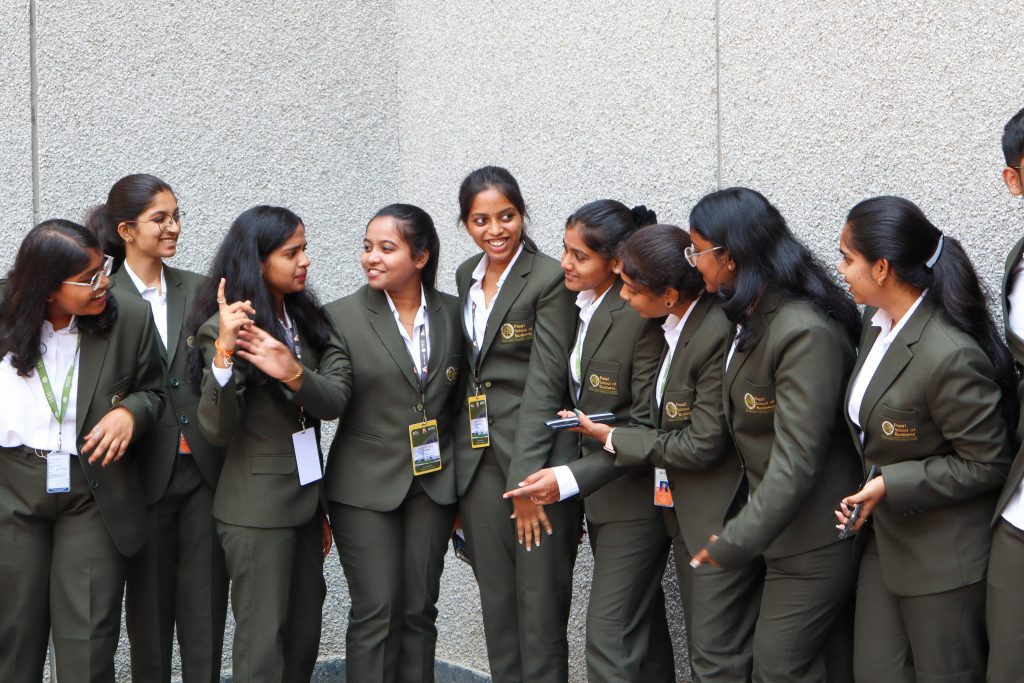
The Paari School of Business organised the very first edition of its signature Business Fest “AMEYA 2k23” on April 12 and 13, 2023, at SRM University-AP, Andhra Pradesh. The EMBA programme was also launched during this event. The event was inaugurated on April 12 by Chief Guest, Dr Nagendra V Chowdary in the presence of the Vice Chancellor, Prof. Manoj K Arora; Registrar, Dr R Premkumar; Dean-Paari School of Business, Prof. Bharadwaj Sivakumaran.
The event was launched on a great scale with events being conducted both from the technical as well as non-technical streams. Students from other educational institutions enthusiastically participated in the fest. Technical events such as How’s That (IPL Auction) and Big Bull (Stock Market Simulation), created interest among the participants. There were events from every parallel offered as specialisations by the B-School. A few other events that were conducted are Resultyics, Get Massive Votes, Mock Commercial, Brand Race, and sustainability concept-based Upcycling.
The non-technical events induced a fun and healthy competitive atmosphere in the university. Events like hopscotch, treasure hunt, and separation anxiety had pulled large crowds. The organising committee also encouraged student entrepreneurship by allowing the students to set up food and game stalls.
The business fest concluded on a high note by rewarding the winners from all the events. The winners were given cash prizes of Rs. 5000 and Rs. 3000 for 1st and 2nd place, respectively. Two movie promotions were organised as part of AMEYA 2k23. The film crew and cast of Anni Manchi Sekunalu visited the campus on April 12, adding entertainment and excitement to the already buzzing fest. Team Ugram were a part of the cultural night on April 13. The event was concluded by dance performances, beatboxing and a spectacular DJ night. AMEYA 2k23 was a grand success and a trademark event in the history of the Paari School of Business.
Continue reading → - 6th Edition of Research Day at SRM University-AP: Fostering Research Culture Among Scholars and Contributing to Research Advancements May 1, 2023
The Hindu
Continue reading →
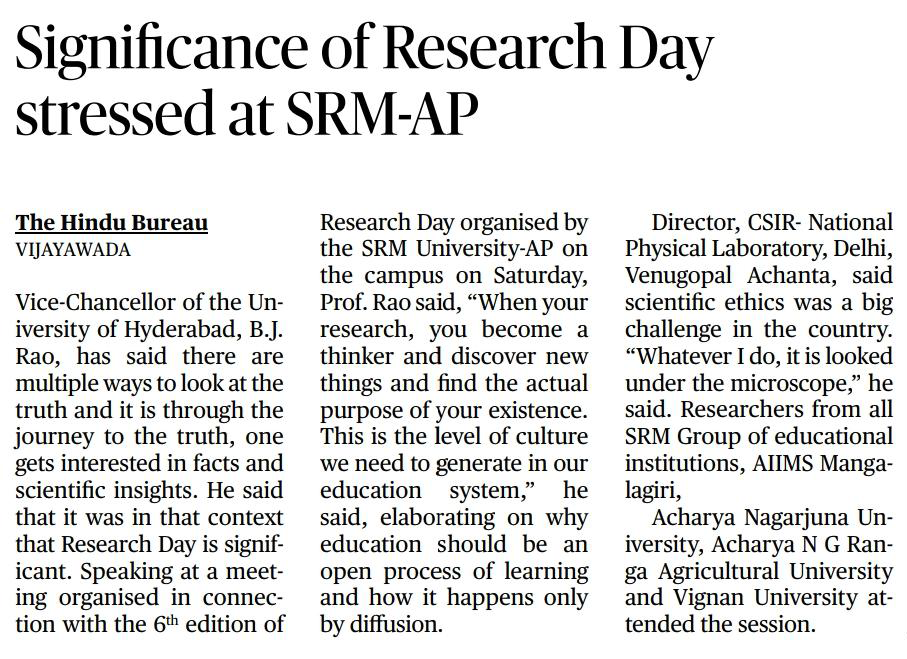
The New Indian Express
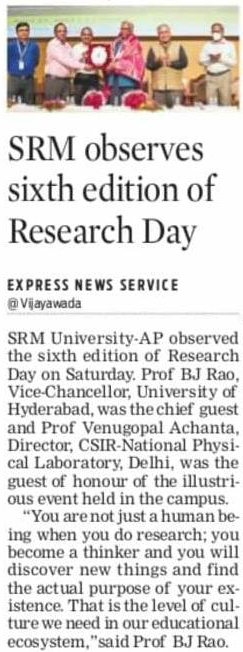
The Hans India
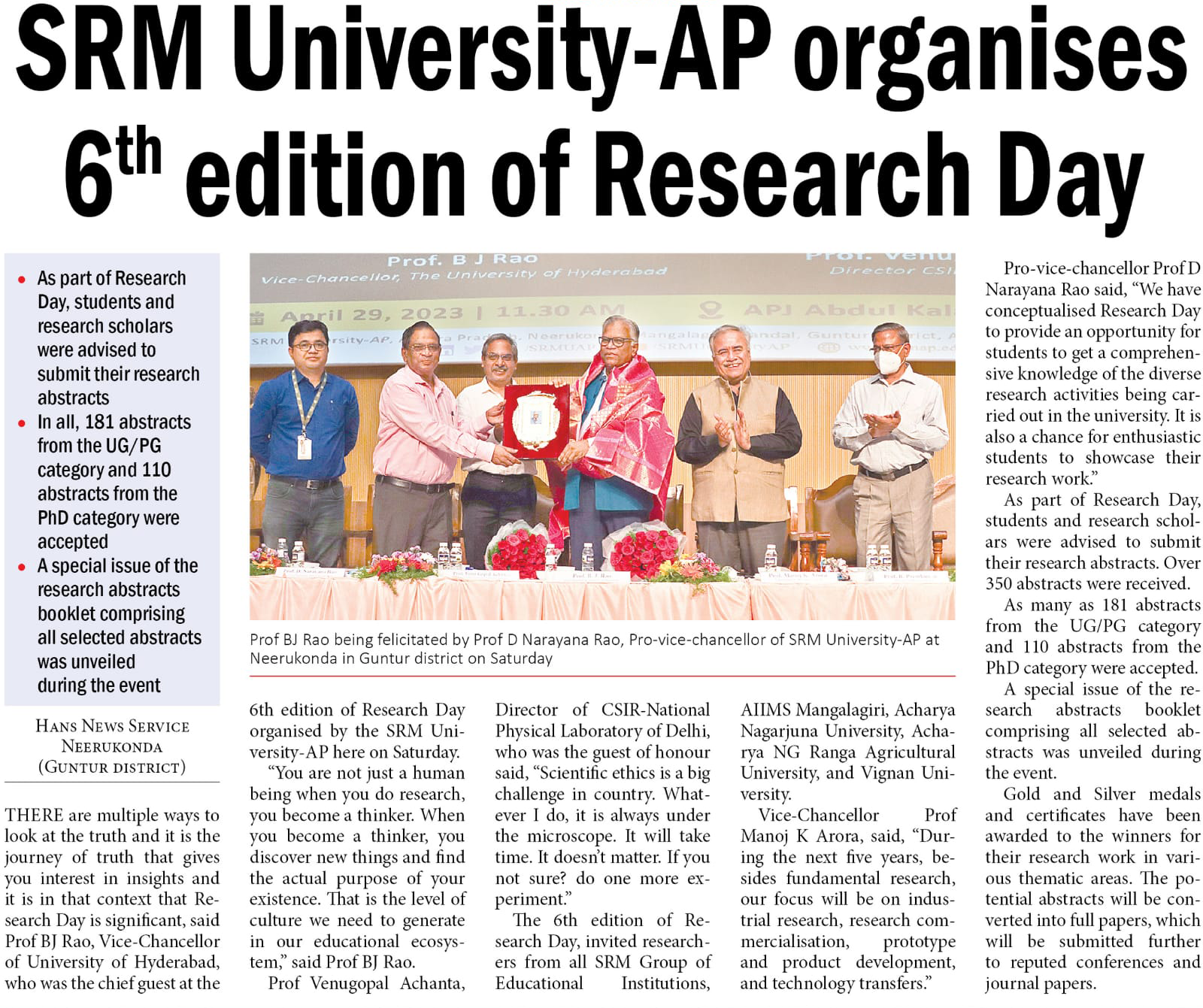
The Pioneer

Eenadu
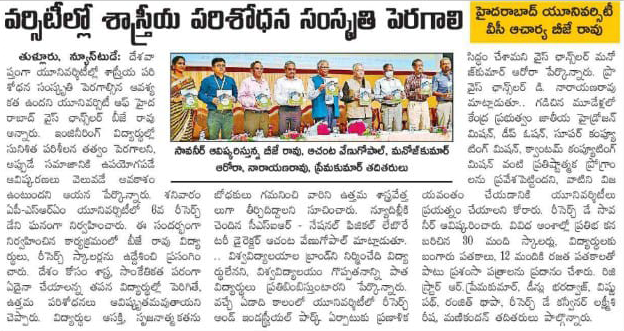
Andhra Jyothi
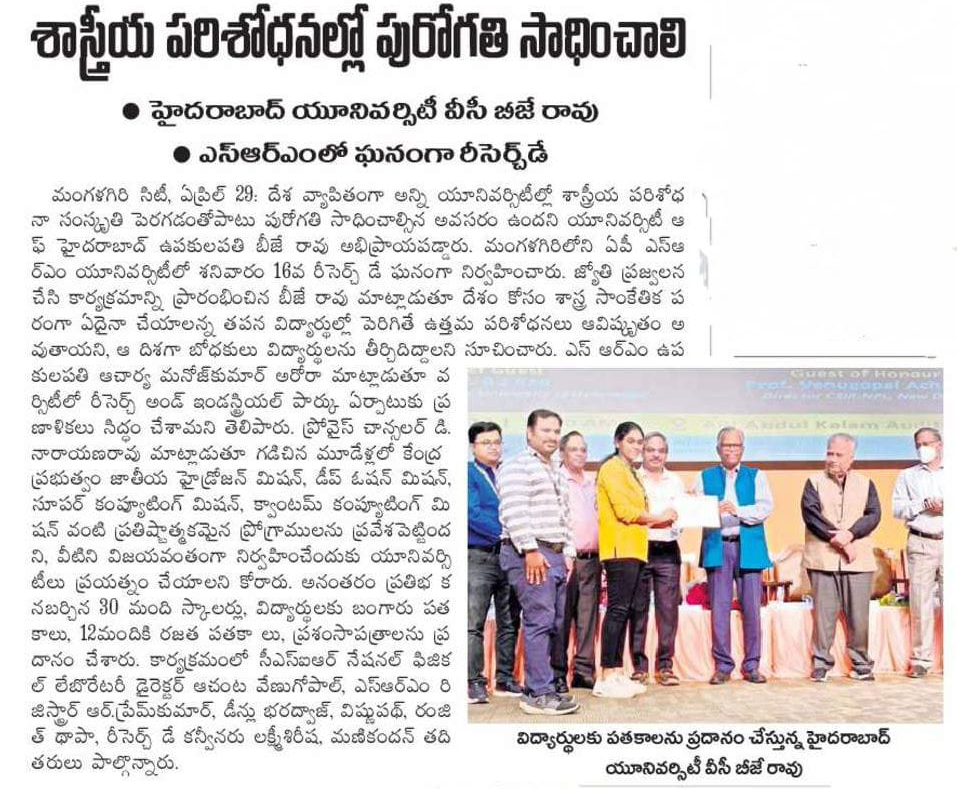
Andhra Prabha
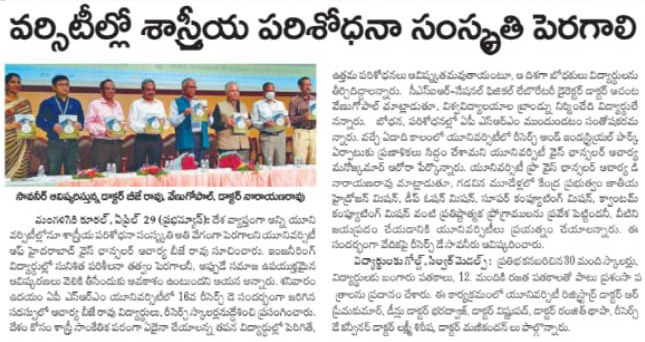
Andhra Patrika
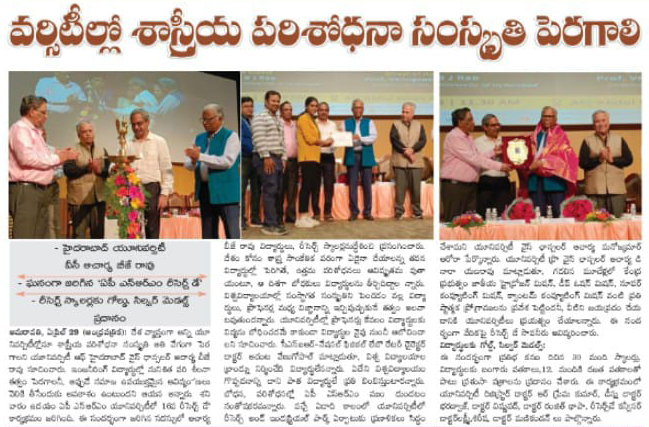
Vartha Prapancham
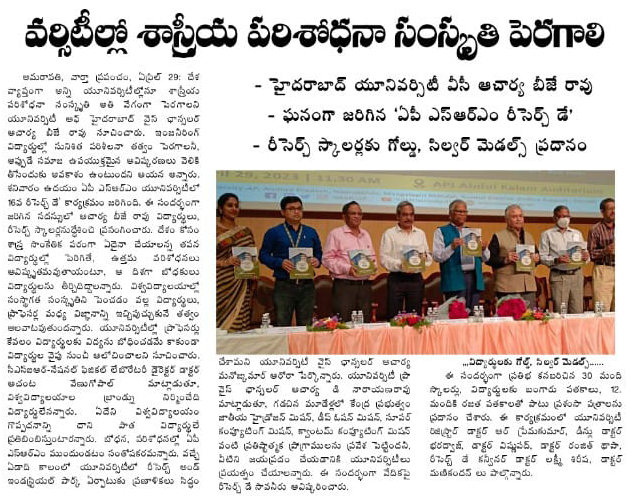
Vartha
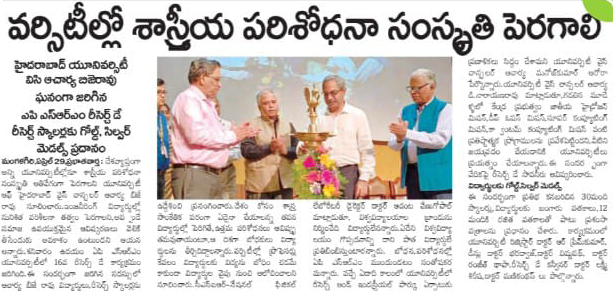
Praja Sakthi
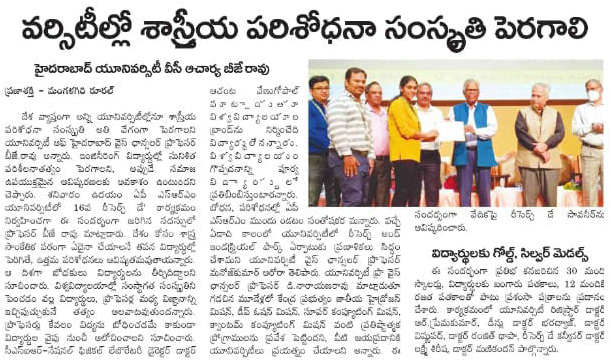
Power
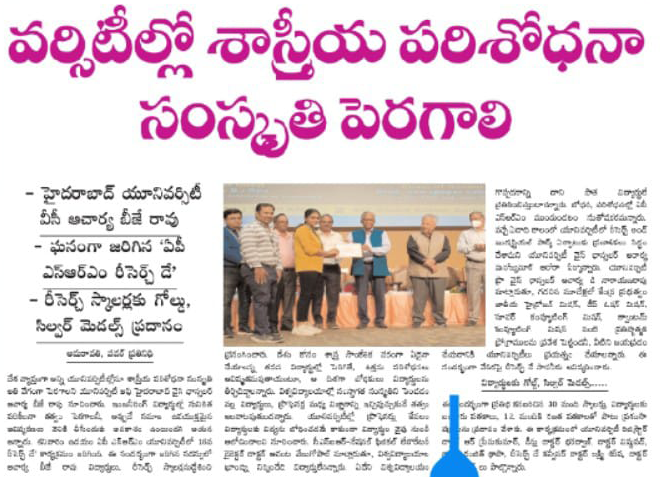
Surya
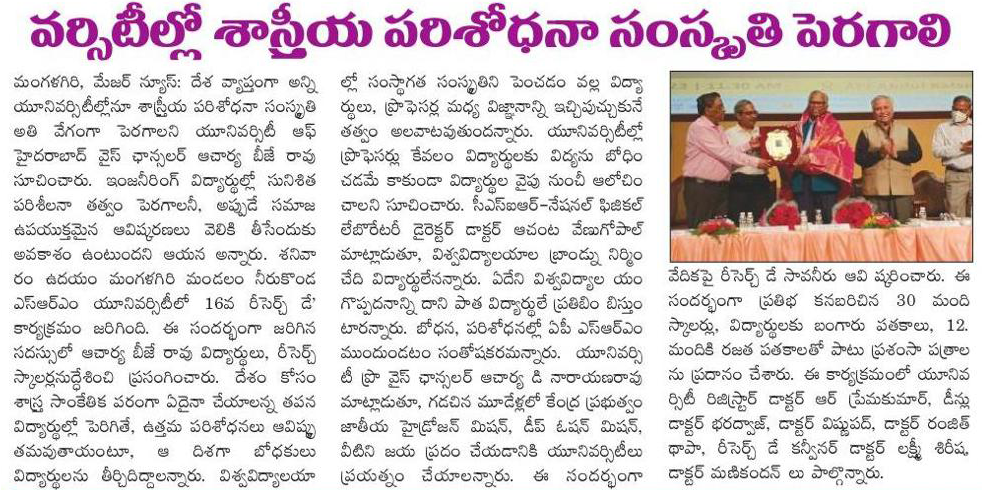
Visalaandhra
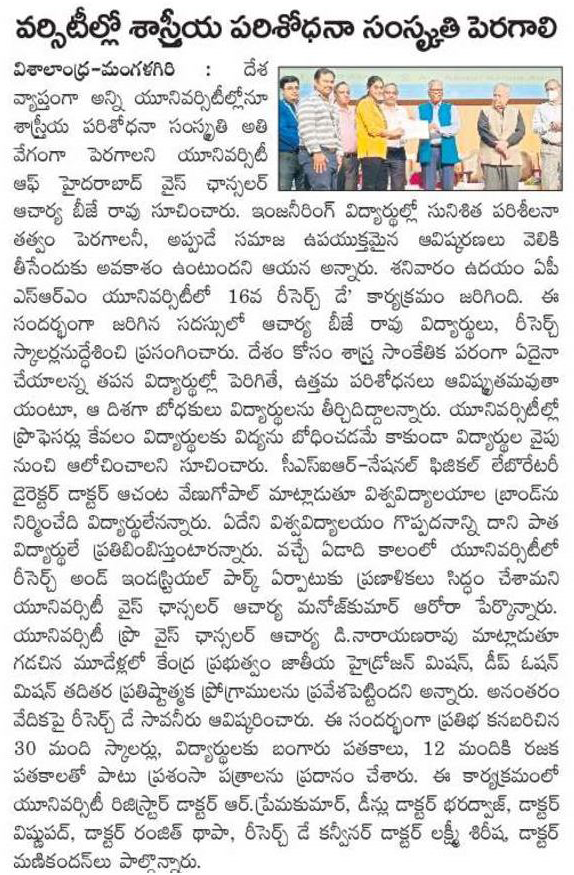
- The 5 ‘I’s of UG and PG Education: Prof. Manoj K Arora at the Industry 4.0 India Conference May 1, 2023
Deccan Chronicle
Continue reading →
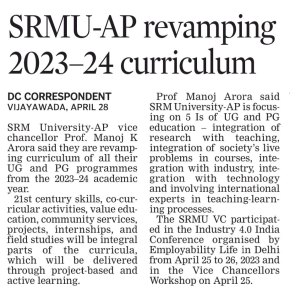
The New Indian Express
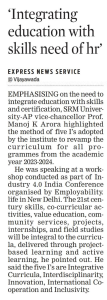
The Hans India
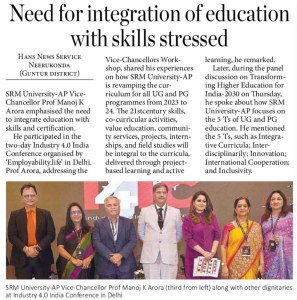
The Pioneer
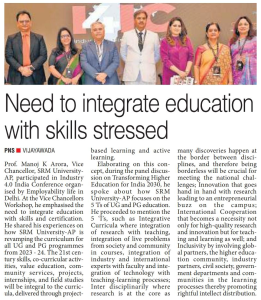
Andhra Jyothi
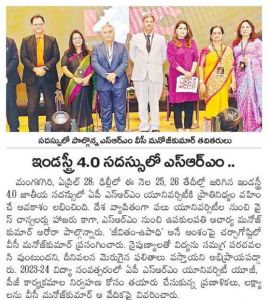
Surya
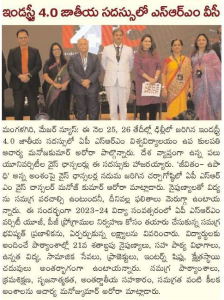
Visalaandhra
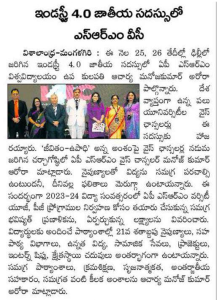
Vartha
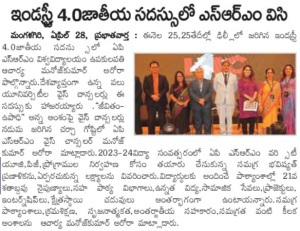
Power

Eenadu
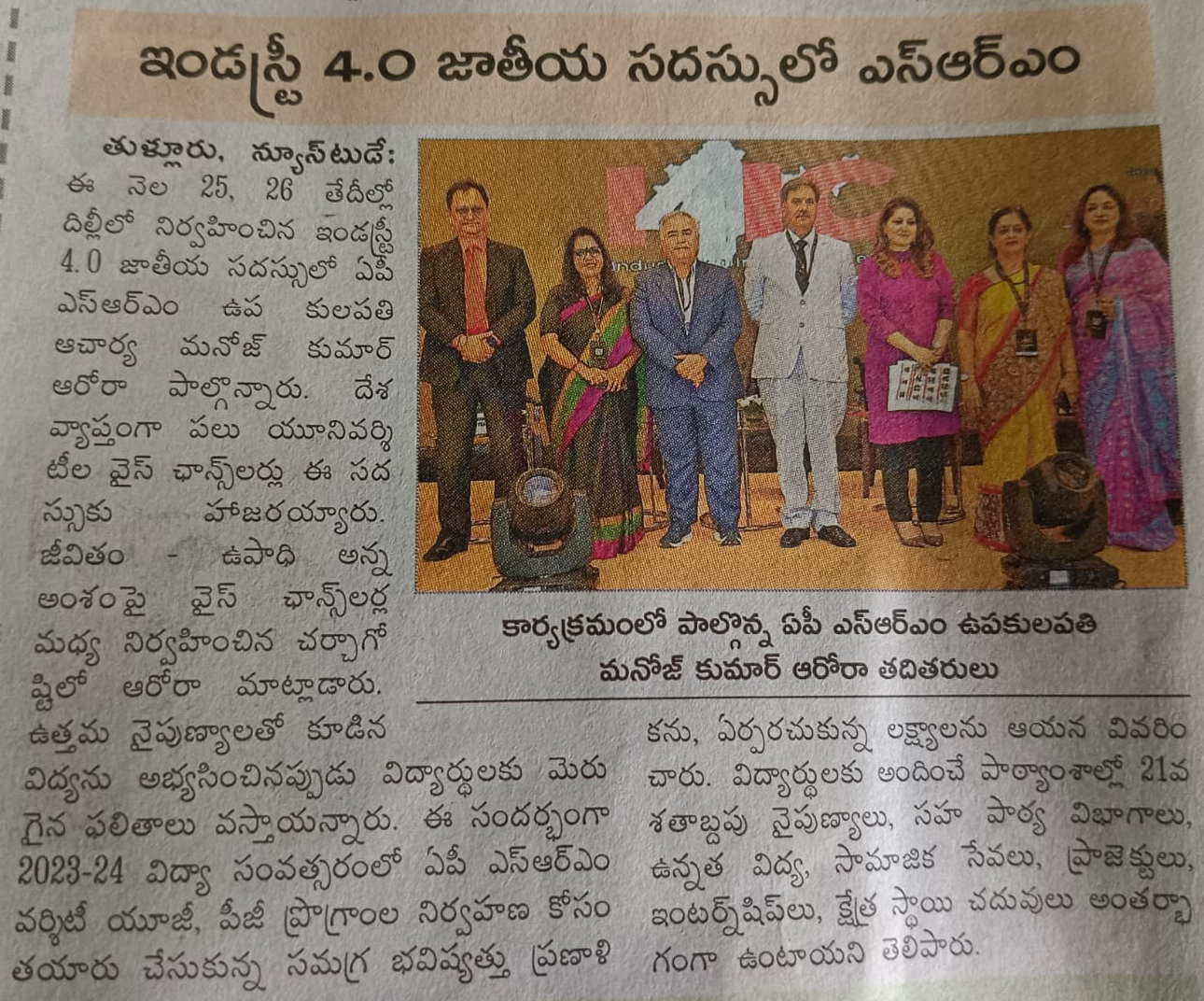
- Workshop on Water Resources in India: Challenges and Hazards April 28, 2023
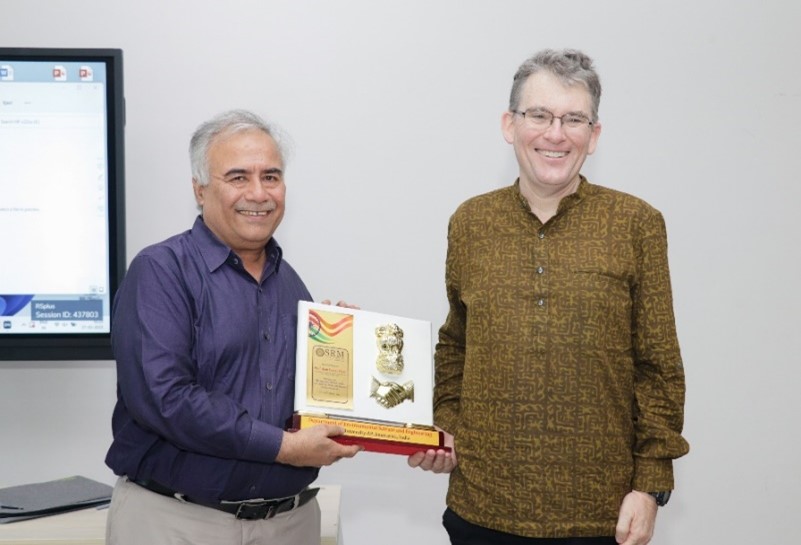
The availability of water as an elixir of life depends on several factors, including land and climate. The Department of Environmental Science and Engineering organised a 2-Day workshop on “How interactions between climate and land use/land cover changes can affect water resources” on March 27 and 28, 2023, in affiliation with the Department of Earth and Environmental Science, University of Kentucky, USA. The workshop was inaugurated by Vice Chancellor Prof. Manoj K Arora. Distinguished academician and researcher, Prof. Alan Ernest Fryar, Department of Earth and Environmental Science, University of Kentucky, was the resource person for the session.
The workshop was conducted with the aim of providing an overview of water resources in India, water resource challenges and hazards, climate change and projected effects, and mitigation and adaptation strategies. Prof. Fryar also explained the groundwater status across India and regional approaches to exploring it as a drinking water resource. He also explained the impact of climate change on groundwater as a fresh drinking water resource and adaptation strategies.
The workshop saw the participation of over 60 faculty, PhD Scholars and UG students from various educational institutions across the district. UG students from the Department of Geology, Hindu College and Chalapathi Institute of Engineering and Technology, Guntur, participated in the session and interacted with Prof. Fryar.
A field visit to the Krishna Riverbank in Amaravati, Guntur, was also conducted as part of the workshop on March 28, where Prof. Fryar interacted with the research scholars and emphasised the importance of field visits and the scientific and systematic way of sample collection from the field. In addition, Prof. Fryar conducted hands-on training on the field instrument (multi-parameter probe, Hanna) for real-time data collection from the river water and groundwater sources in the field.
Continue reading →


